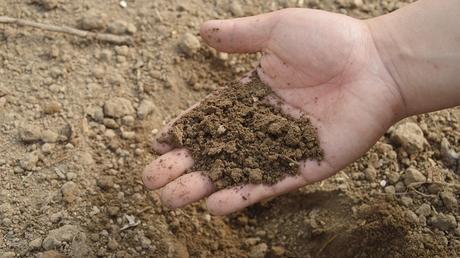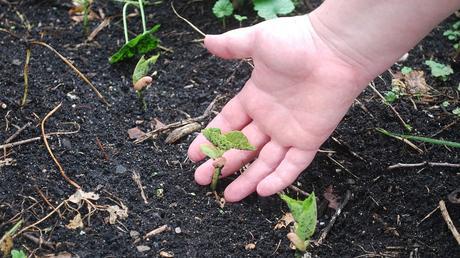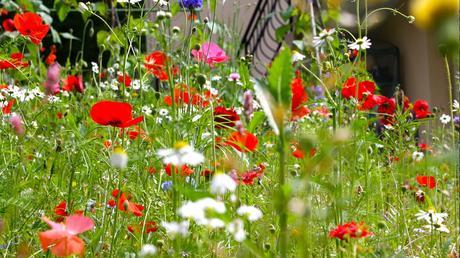Once upon a time not all that long ago, the countryside was full of meadows bursting with an array of flowering plants that support wildlife such as butterflies, insects, birds and small animals. Sadly, over the last 80 or so years, we’ve lost a staggering 99% of what’s termed unimproved grasslands.
Growing a wildflower meadow in your garden is a small contribution you can make towards promoting eco diversity where you live. You’ll be providing a welcoming habitat for local wildlife to feed and nest while creating a natural feel in your garden that adds color and all round interest.
Here’s what you need to do.
1. Choosing a good location
Whether you decide to use an existing flower bed or a patch of lawn to turn into a wildflower meadow, it should ideally be an open and sunny area. It doesn’t have to be a large expanse (but it could be!) and can be flat or sloping. Generally speaking, meadows thrive more easily on lighter, free draining soils where competitive grass growth is less aggressive than on clay rich soils. However, any type of soil can be prepared successfully.
2 Preparing the ground

If you’re a diligent gardener, having fertilised your beds and lawn on a regular basis, the soil is likely to be too rich for use as a wildflower meadow. Wildflowers grow best in unproductive soil where there is no competition from vigorous grasses. Preparing the ground will involve removing a 10cm layer of topsoil, either with the help of a turf cutter or a spade and plenty of elbow grease.
3 Controlling weeds
Before you can start sowing, it’s important to get rid of any weeds, particularly docks, thistles and nettles that are hard to remove one the meadow is established. In addition to digging over the area and removing the offending weeds by hand, you can use a herbicide spray to assist. Then cover the area with black plastic sheeting so that any weeds still remaining in the soil germinate and die.
4. Sowing into grass

If you wish to sow straight into an existing lawn or meadow that is starting to look a bit thin, it is possible simply to overseed with wildflower seeds. However, the ground will still need preparing by thorough raking or harrowing beforehand to make sure the seeds reach the soil. In order to reduce the fertility in the existing grass covered soil, it’s a good idea to sow a crop of mustard plants in the first year – these are known to be notoriously nutrient hungry and will help you create the best conditions for your wildflower meadow.
5. Choosing wildflower seed mix
When selecting your wildflower seed mix, bear in mind the type of soil you are sowing into – clay, sand, silt, loam, peat or chalk – and choose a suitable mix. Don’t forget that shady areas will need a different seed mix than sunny spots.
Good wildflower seed combinations typically include: birds-foot trefoil, yellow rattle, common sorrel, cowslip, field scabious, greater and common knapweed, hoary plantain, lady’s bedstraw, ox-eye daily, meadow buttercup, red clover, wild carrot, yarrow, ribwort plantain plus a variety of wild grasses. Rather than assembling your own, it’s easy to find ready-made wildflower meadow mixes from reputable garden centres or from specialist online retailers such as Seed Parade.
6. Best sowing times
The best time to sow wildflowers is in spring (late March to May) or late summer (August/September). Springtime is great because it gives the seeds a chance to establish through the rest of the year. Autumn is a good time because that’s when grass grows slowest, giving the wildflowers a chance to come through.
7. Sowing your wildflower meadow
For optimum coverage, you will need 3-5 grams of seed per square meter. Mix the seed with dry silver sand (not builder’s sand which is too coarse and damp) in a ratio of 4 parts sand to 1 part seed and scatter evenly across the area. While there’s no need to rake the seeds in, it’s a good idea to gently walk across the just sown area to ensure the seeds have made contact with the soil. Use netting to protect the area from birds and keep well watered until established.
8. Managing your wildflower meadow

Having done all the hard work, how do you keep your wildflower meadow looking its best? Sadly, any wildflower meadow will revert to scrub if you let competitive species take over, so regular maintenance is highly recommended.
Mow your meadow during its first season to control annual weeds, and cut out or spot treat any perennial weeds. Let the meadow flower in the second year before you get the mower out in the summer. Make sure you remove the cuttings after mowing, to keep soil fertility low. The good news is that a successfully established wildflower meadow will be a permanent feature in your garden and improve with each passing year.
